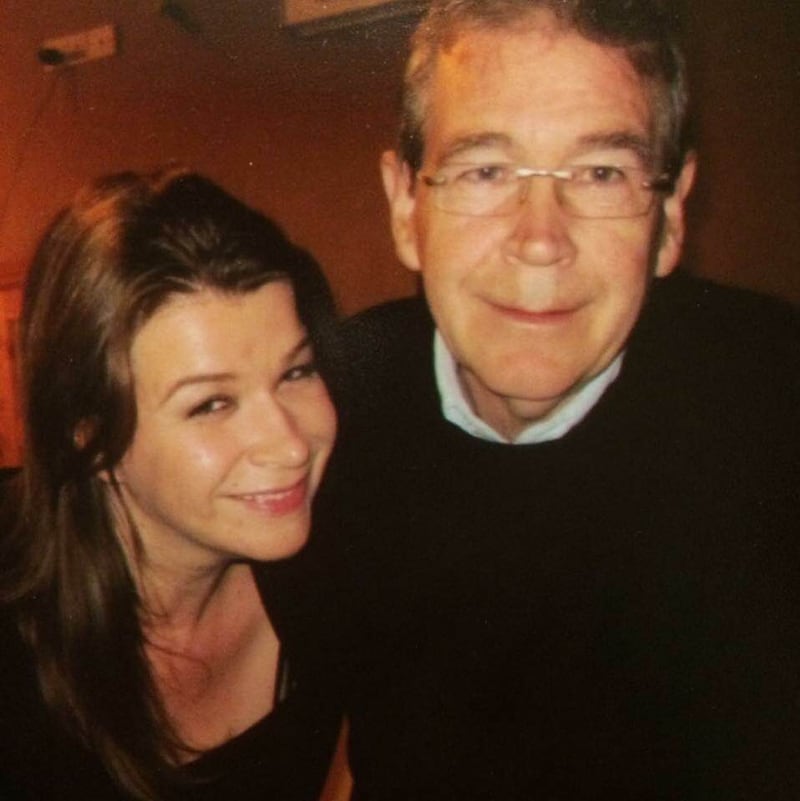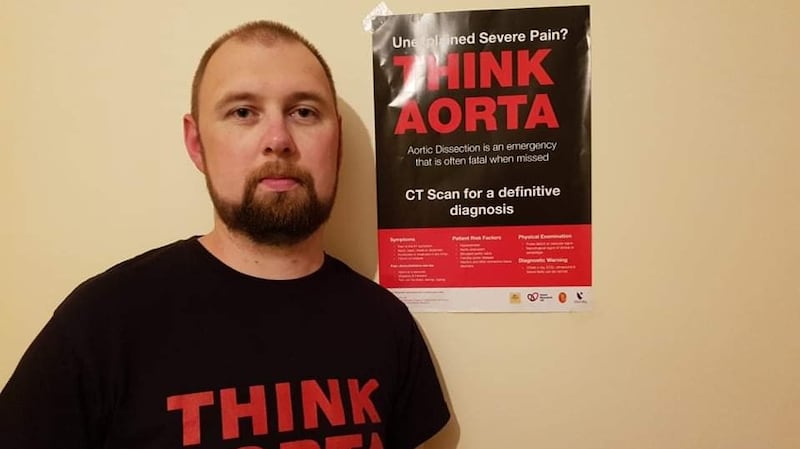Tim Fleming
Fleming, originally from Kerry, was an active and healthy man with no underlying health issues. So when he died unexpectedly in 2015, aged 69, his family was distraught.
Married to Kathleen, the father-of-four (Caroline, Aisling, Catherine and Jeremiah), was attending a business meeting in Dublin when he suddenly became unwell with, according to his daughter Catherine, “excruciating pain in his back, chest and abdomen”. He collapsed and was taken immediately taken to A&E, but, despite medical intervention, he died.

“When Dad was triaged, a 10 out of 10 pain score was recorded and one of the doctors made a diagnosis of aortic dissection and ordered an urgent CT scan and surgical review,” says Catherine. “But, sadly, this was the only person who was thinking of this possibility and as his shift ended, so did Dad’s chance of survival as early diagnosis and treatment is critical for survival, because 50 per cent die within 48 hours. And my dad was dead within 20 hours.”
September 19th to 26th is Global Aortic Disease Awareness Week when countries around the globe come together to try and increase awareness of this often-fatal disease. And Catherine, who in light of the tragedy which befell her family, has become vice chairwoman of Aortic Dissection Awareness UK & Ireland, does not want her father's death to be in vain and is urging people, particularly in the medical profession, to become more aware of this serious condition.
“Expert reports advise that Dad had a 90 per cent chance of survival if he had been diagnosed and treated on his first admission, but the correct diagnosis was not made until it was all too late and Dad paid the ultimate price, with his life,” she says. “It threw our family into despair and our world was ripped apart. We still grieve for our father; we never had the chance to say goodbye. Dad died alone, frightened and scared with no one to hold his hand or comfort him in his final hours.
“I don’t want his death to be in vain. So if Dad’s loss of life, and indeed all of those who have lost their life to a misdiagnosed aortic dissection, can accelerate change, then something very positive will come out of the pain. Everyone is deserving of their chance to survive a treatable condition and to live.”
Stephen Curry

Stephen Curry has also had experience of aortic dissection and although it was initially thought that he was having a heart attack, fortunately he was diagnosed quickly, and the outcome was positive.
Last year, aged just 29, the father of one (Bradley, 2), developed a crippling pain in his chest and had difficulty breathing. His wife, Chantelle, called the emergencies services and 10 minutes later the paramedics were on the scene. “When the ambulance arrived, I had my blood pressure checked and an ECG showed that something wasn’t right so I was given an Aspirin which is good for thinning the blood as they thought I might be having a heart attack,” he says. “In actual fact this was the worst thing I could have been given and the result could have been fatal but at this point, the paramedics didn’t know what was wrong with me.
“I was taken to the local hospital and on the way, they continued doing tests on me. Then when I arrived, I was seen by one doctor who called for a second opinion from a colleague who ordered a CT scan. This revealed that I was suffering from an Aortic Dissection Type A (a tear in the lining of the aorta) which is hard to diagnose because it often mimics a heart attack.”
Stephen was taken straight to theatre where he underwent open heart surgery as without it, he was told, he would have had less than 24 hours to live. “I was very scared, more about the general anaesthetic than the surgery itself as I never thought I was going to die,” he says. “But I did say my goodbyes and told Chantelle to make sure our son grew up knowing all about me if I didn’t make it.”
Stephen survived and consultant cardiologist Dr Angie Brown says urgent treatment like this is essential to improve survival rates. "If not treated as an emergency an acute aortic dissection can be fatal from not enough blood flow to the heart or complete rupture of the aorta," she explains. "However, this disease can be successfully treated if caught early before a dissection occurs.
“The ideal scenario is to identify people with an aortic aneurysm which is a dilatation [bulge] of the aorta, as this can lead to a person developing an aortic dissection.”
He was discharged after 12 days in hospital and although it took months for him to recover from the surgery, he has made good progress.
But life has changed and while Stephen is now back on his feet, he is very wary about overdoing things while conscious that he needs to keep physically active and more importantly address the mental issues which have undoubtedly arisen from this life changing experience.
“I am doing fine now physically, but it did take me a while to get up on my feet and out and about,” he says. “I went on a cardio rehabilitation programme and I do intend to join the gym, but I am still a little nervous of putting any strain on my heart. I do a bit of walking mainly to keep myself sane and sometimes I get very out of breath as I am still recovering, but apart from that I have no other physical side effects so everything is fine in that sense.
“But I do have issues with the mental side of things and have been seeing a counsellor who diagnosed me with post-traumatic stress disorder – going from being a fit 29-year-old to someone who was on the edge of death was a very big shock and will take some getting used to.”
The Wexford man has become a member of the same aortic dissection Awareness group as Catherine has and is now a regional representative for Ireland. "My first job as a rep was to see if I could get the HSE on board to draft up something regarding aortic dissection for future patients and survivors, so hopefully this will happen," he says. "And if it helped just one person to understand what this is, it would be worth it as if I had known enough about it, my mental recovery might not have been so tough.
“I believe there needs to be a little bit more support for patients of heart conditions in general as it can be a scary, lonely place at times – both physically and mentally. If it weren’t for social media I would be lost as I’ve met some great people who have become good friends.”
Dr Angie Brown
The medical director of the Irish Heart Foundation says outcomes of the repair of aneurysms and dissections have "significantly improved" over the years and adequate recovery time is important.
“The recovery time and prognosis depend on whether the surgery is elective or emergency, the type of aneurysm or dissection and any other comorbidities of the patient, for example, if there is underlying coronary artery disease or heart failure,” she says.
“And ongoing surveillance of those at risk of aortic aneurysm and awareness of the symptoms of acute dissection with early detection and treatment by a multidisciplinary is crucial for the ongoing improvement in outcomes.”
ABOUT AORTIC DISSECTION
- An aortic dissection is a medical emergency. It occurs when the wall of the aorta (the main artery carrying blood away from your heart to the rest of your body) becomes weakened and thin. As blood flows between the layers of the aorta wall, it forces them apart and causes a dissection.
- In most cases this is associated with severe chest or back pain (often described as a tearing pain), sweating and light headedness.
- The blood pressures may be different in both arms and sometimes it may not be possible to feel a pulse in the arms or legs.
- The causes of an aortic aneurysm include high blood pressure, some connective tissue disorders such as Marfan syndrome and Ehlers-Danlos syndrome, a bicuspid aortic valve or inflammation or infection in the artery, with the risk increasing in smokers and people with high cholesterol levels.
- An aortic dissection can also be caused by trauma such as in a road traffic accident.
- In some cases, an aortic aneurysm may be prevented by treating high blood pressure, stopping smoking, and treating high cholesterol as this reduces the stress on the aorta and therefore the risk of aneurysm formation.
- The management and treatment of an aneurysm depends on its size and location within the aorta. If it enlarges significantly it may require surgery.








